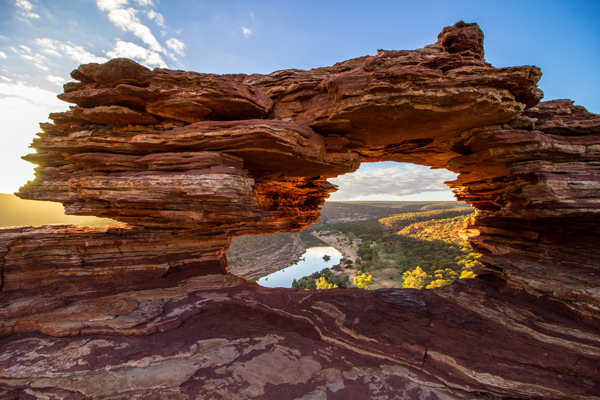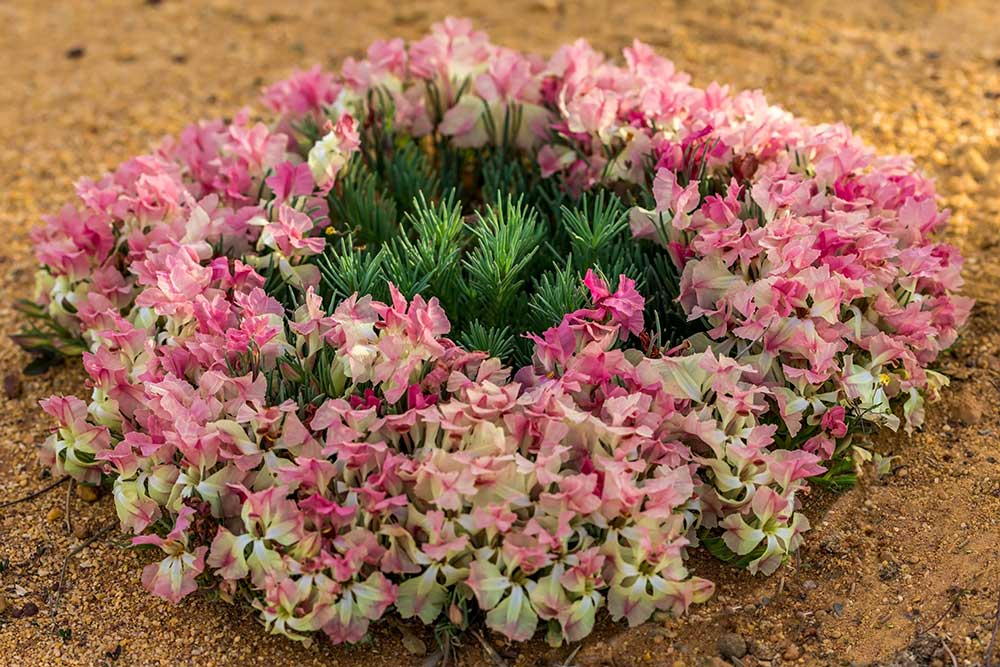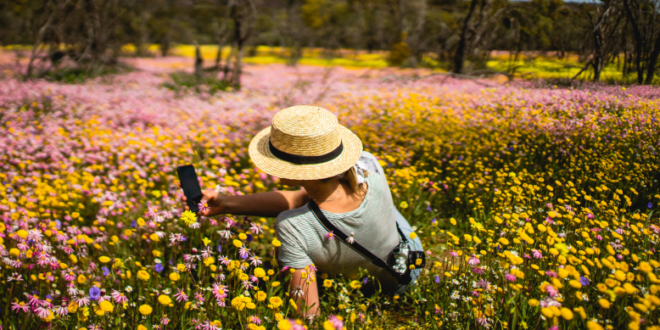It doesn’t get much better than Springtime in Australia; unbeatable views of the Hunter Valley’s hills during a wine tasting, and of course the sprawling fields of Western Australia’s wildflowers in full bloom.
Throughout Spring, the ‘Wildflower State’ as Western Australia is commonly known, certainly lives up to its nickname. Western Australia is incredibly vast and home to a diverse number of landscapes, all which come alive during Spring. There are over 12,000 species of wildflower to be seen. With more than 60% of these not found anywhere else in the world. It truly is the greatest wildflower show on earth!
Between July and late September the blankets of flowers colour the landscape from coast to the outback. Lasting almost five months of the year, Western Australia’s wildflower season is one of the longest in the country. Quiet, sheltered towns become hives of activity. Visitors travel from all around to see the dazzling carpets of pink, yellow and white wildflowers as far as the eye can see. Check out our list below to find out where you can discover the finest fields of wild blooms.
INSPIRED? Check out AAT Kings’ Wildflower Wanderer Guided Tour
Kalbarri National Park
You don’t get a much more rugged landscape than Kalbarri National Park in the North West region of Western Australia. Covering an area of 186,000 hectares, the park is located on the lower reaches of the Murchinson River and as a result of 400 million years of the river’s flow, stunning deep red and white gorges stretch throughout the park, making it a truly magnificent sight and launchpad for exploration.
From July to November, over 800 species of native wildflower burst into full bloom and colour the landscape with vibrant hues. Many of these are distinctive to the region, including the Kalbarri Spider Orchid. Keep an eye out for vibrant Banksias, Pink Pokers, Flannel Bush and Pink Fairies.

Coalseam Conservation Park
Referred to as the ‘holy grail for wildflower hunters. This small reserve is undoubtedly one of Western Australia’s top wildflower hotspots. As the site of the first mined coal deposit in the state, the park is not only a haven for flower lovers, it is rich in character with over 250 million years of geological history.
As a result of the park’s location between sandplain and arid desert, the variety of wildflowers is unmatched. The never-ending carpets of incredible Everlastings, Banksias, Hakeas and Grevilleas are a treat for your eyes. You are also sure to encounter a diverse range of wildlife. We call this a natural paradise.
INSPIRED? Check out AAT Kings’ Wildflower Wanderer Guided Tour
Mullewa Region
Visitors travel from all corners of the globe to discover the dazzling displays of Everlastings and the surrounding nature reserves of Mullewa. Located in the heart of Western Australia’s wildflower region, Mullewa boasts vast displays of native flora that stretch as far as the eye can see. It is most famously home to the rare wreath flower. A remarkable species of native flower and the star attraction of the annual wildflower show.

Kings Park
You don’t always have to venture far out into bushland to discover a stunning array of native wildflowers. One of the most beautiful inner-city parks in Australia, Kings Park is home to the magnificent Western Australian Botanic Garden. With over 3,000 species of the state’s unique flora, the stunning collection of wildflowers is unique and the perfect introduction to your wildflower exploration through Western Australia.
INSPIRED? Check out AAT Kings’ Wildflower Wanderer Guided Tour
Nambung National Park
Just when you thought the Pinnacles couldn’t get any more spectacular. During later Winter and Spring, the surrounding national park comes alive with an outburst of colour in the form of native wildflowers. You will find Wattle, Quandong, Yellowtail flower, Parrot Bush, White Clematis, Cockies Tongues and Banksias.
Article in partnership with AAT Kings Guided Tours. AAT Kings new Wildflower Wanderer itinerary is available to book for 2022. Discover why Western Australia is known as the ‘Wildflower State’. Visiting many of the spectacular destinations we’ve mentioned above.
Have you seen Western Australia’s sprawling fields of wildflowers?










Join the Discussion
Type out your comment here:
You must be logged in to post a comment.